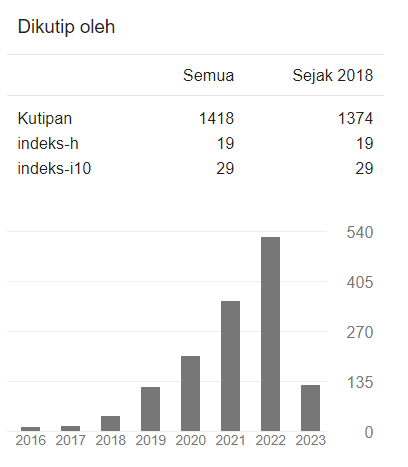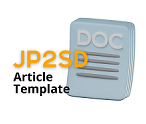PENGEMBANGAN GERAK DASAR RENANG UNTUK ANAK SEKOLAH DASAR
DOI:
https://doi.org/10.22219/jp2sd.v1i1.1523Abstract
PENGEMBANGAN GERAK DASAR RENANG
UNTUK ANAK SEKOLAH DASAR
Bustanol Arifin
e-mail: bustanol_arifin@yahoo.co.id
Abstract:
Movement skills in the learning process of physical education in primary schools
one of which is the basic swimming motion. The reason of the branch pool can be used to
achieve the goal of physical education because the pool has many benefits. The benefits of
which can assist the growth and development of the body, to socialize and interact with others,
increase self-confidence, and can be used as a recreational activity due to cold stimuli can
refresh the body and feelings. Model development of basic swimming motion in primary
schools should be tailored to the stage of growth and development that results are achieved in
accordance with the desired learning objectives. Motion design is basic pool (1) Introduction of
water covers the child sits alongside a pond, moving both legs on the edge of the pool, moving
both feet with your legs straight, prone lane swimming by moving the legs, go and stand
alongside a pond, put the head into the water, walk holds a float pond, (2) motion base pool
covers sliding movement, leg movement with a buoy, hand rotary movement, do take the
breath with a swivel arm, coordinating the movements in moving the base pool.
Abstrak:
Keterampilan gerak dalam proses pembelajaran pendidikan jasmani di sekolah dasar
salah satunya adalah gerak dasar renang. Alasan mengapa cabang renang dapat digunakan
untuk mencapai tujuan pendidikan jasmani karena renang memiliki banyak manfaat. Manfaat
tersebut diantaranya dapat membantu pertumbuhan dan perkembangan tubuh, bersosialisasi
dan berinteraksi dengan orang lain, menambah kepercayaan pada diri sendiri dan dapat
digunakan sebagai kegiatan rekreatif karena rangsangan dingin dapat menyegarkan tubuh dan
perasaan. Model pengembangan gerak dasar renang di sekolah dasar harus disesuaikan dengan
tahap pertumbuhan dan perkembangan anak, agar hasil yang dicapai sesuai dengan tujuan
pembelajaran yang diinginkan. Desain gerak dasar renang tersebut meliputi (1) Pengenalan air,
anak duduk di pinggir kolam, menggerakkan kedua kaki di pinggir kolam, menggerakan kedua
kaki dengan kaki lurus, tengurap di pinggir kolam dengan menggerakkan kedua kaki, masuk
dan berdiri di pinggir kolam, memasukkan kepala ke dalam air, berjalan memegang pelampung
di kolam, (2) Gerak dasar renang meliputi melakukan gerakan meluncur, melakukan gerakan
kaki dengan pelampung, melakukan gerakan putar tangan, melakukan ambil nafas dengan
putar tangan, melakukan gerak koordinasi gerakan dasar renang.
Kata Kunci: gerak dasar renang, sekolah dasar (SD)
Downloads
Downloads
Published
Issue
Section
License
Authors who publish with Jurnal Pemikiran dan Pengembangan Sekolah Dasar (JP2SD) agree to the following terms:
- For all articles published in Jurnal Pemikiran dan Pengembangan Sekolah Dasar (JP2SD), copyright is retained by the authors. Authors give permission to the publisher to announce the work with conditions. When the manuscript is accepted for publication, the authors agree to automatic transfer of the publishing right to the publisher.
- Authors retain copyright and grant the journal right of first publication with the work simultaneously licensed under a Creative Commons Attribution-ShareAlike 4.0 International License that allows others to share the work with an acknowledgment of the work's authorship and initial publication in this journal.
- Authors are able to enter into separate, additional contractual arrangements for the non-exclusive distribution of the journal's published version of the work (e.g., post it to an institutional repository or publish it in a book), with an acknowledgment of its initial publication in this journal.
- Authors are permitted and encouraged to post their work online (e.g., in institutional repositories or on their website) prior to and during the submission process, as it can lead to productive exchanges, as well as earlier and greater citation of published work (See The Effect of Open Access).

This work is licensed under a Creative Commons Attribution-ShareAlike 4.0 International License.



















